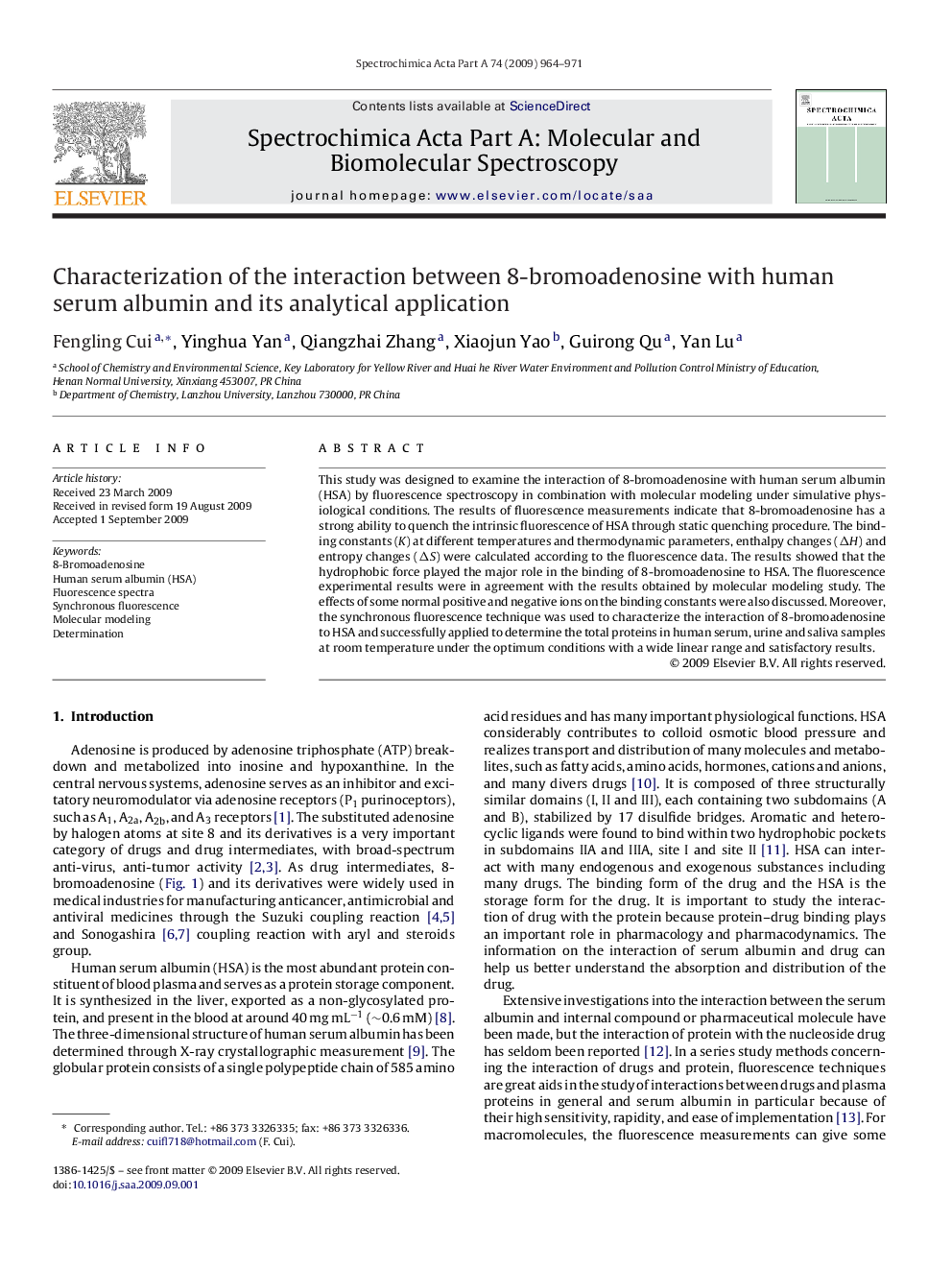| Article ID | Journal | Published Year | Pages | File Type |
|---|---|---|---|---|
| 1236873 | Spectrochimica Acta Part A: Molecular and Biomolecular Spectroscopy | 2009 | 8 Pages |
This study was designed to examine the interaction of 8-bromoadenosine with human serum albumin (HSA) by fluorescence spectroscopy in combination with molecular modeling under simulative physiological conditions. The results of fluorescence measurements indicate that 8-bromoadenosine has a strong ability to quench the intrinsic fluorescence of HSA through static quenching procedure. The binding constants (K) at different temperatures and thermodynamic parameters, enthalpy changes (ΔH) and entropy changes (ΔS) were calculated according to the fluorescence data. The results showed that the hydrophobic force played the major role in the binding of 8-bromoadenosine to HSA. The fluorescence experimental results were in agreement with the results obtained by molecular modeling study. The effects of some normal positive and negative ions on the binding constants were also discussed. Moreover, the synchronous fluorescence technique was used to characterize the interaction of 8-bromoadenosine to HSA and successfully applied to determine the total proteins in human serum, urine and saliva samples at room temperature under the optimum conditions with a wide linear range and satisfactory results.
